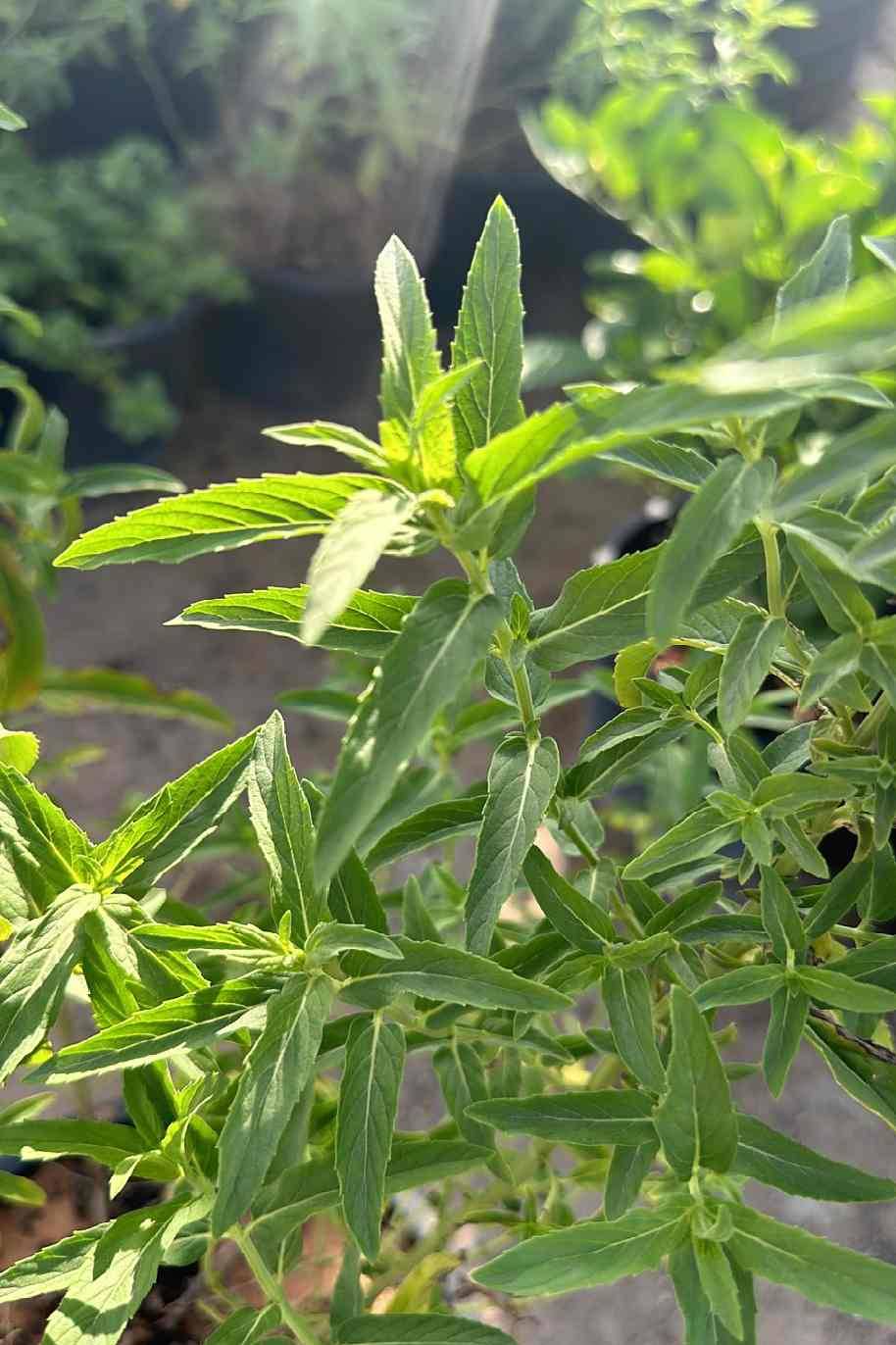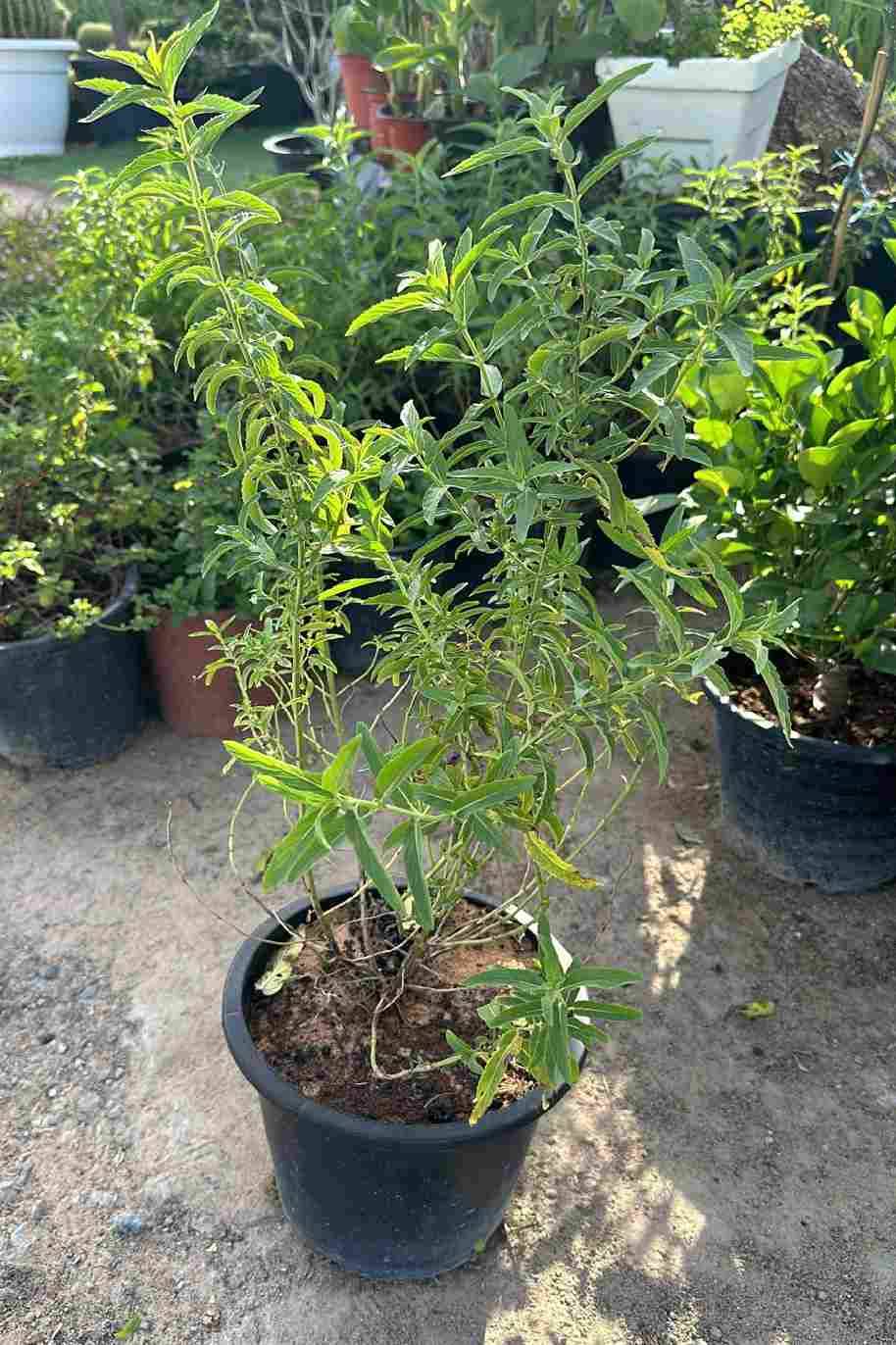Plant Bio
Mentha longifolia, commonly known as horse mint or wild mint, is a perennial herbaceous plant belonging to the Lamiaceae family. Native to Europe, Asia, and North Africa, it is widely distributed and cultivated for its culinary, medicinal, and ornamental uses. Here's a general description:
Appearance: Horse mint typically grows upright, reaching heights of 1 to 2 feet (30 to 60 centimeters). It features square stems with opposite leaves that are lance-shaped and serrated along the edges. The leaves are typically a vibrant green color and emit a pleasant minty aroma when crushed. In summer, small clusters of pale purple to lilac flowers bloom atop the stems, attracting pollinators such as bees and butterflies.
Fragrance and Flavor: The leaves of Mentha longifolia have a strong, refreshing minty scent and flavor, similar to other mint varieties. They are often used fresh or dried in culinary applications to add flavor to teas, beverages, salads, desserts, and savory dishes.
Growth Habit: As a perennial herb, Mentha longifolia forms dense clumps of foliage over time, spreading via underground rhizomes. While it can be invasive in favorable growing conditions, it is easy to control by containing its growth in containers or planting it in areas where its spread can be managed.
Care Guide for Mentha longifolia:
Sunlight: Plant horse mint in a location that receives partial to full sunlight. While it can tolerate some shade, it thrives in full sun, which promotes vigorous growth and enhances the flavor and aroma of the leaves.
Soil: Provide well-draining, fertile soil with a slightly acidic to neutral pH (around 6.0 to 7.0). Horse mint prefers moist, loamy soil rich in organic matter, but it can adapt to a wide range of soil types, including sandy or clayey soils. Amending the soil with compost or aged manure before planting can improve its texture and fertility.
Watering: Keep the soil consistently moist but not waterlogged, especially during hot, dry weather. Water horse mint regularly, allowing the top inch (2.5 centimeters) of soil to dry out slightly between waterings. Avoid overwatering, as it can lead to root rot and other moisture-related issues.
Fertilization: Horse mint generally does not require heavy fertilization, as overly rich soil can lead to excessive foliage growth at the expense of flavor and aroma. Apply a balanced, water-soluble fertilizer diluted to half strength every 4 to 6 weeks during the growing season (spring through fall) to provide essential nutrients.
Pruning: Regularly prune horse mint to encourage bushy growth and prevent it from becoming leggy or straggly. Pinch back the stems regularly to promote branching and harvest the leaves as needed. Removing spent flowers can also help prolong the plant's blooming period and prevent self-seeding.
Propagation: Horse mint can be propagated easily by division or stem cuttings. Divide established clumps in spring or early fall, ensuring that each division has healthy roots and shoots. Alternatively, take stem cuttings from healthy, mature plants and root them in moist potting soil or water until they develop roots.
Pest and Disease Control: Horse mint is relatively resistant to pests and diseases, but it may occasionally attract aphids, spider mites, or whiteflies, especially when grown indoors or in crowded conditions. Monitor the plants regularly for signs of infestation and treat affected plants promptly with insecticidal soap or neem oil.
Harvesting: Harvest horse mint leaves as needed throughout the growing season, taking care not to remove more than one-third of the plant's foliage at a time. Harvesting regularly encourages new growth and maintains the plant's compact shape. Use sharp scissors or pruning shears to cut the leaves just above a leaf node.
By following these care guidelines, you can successfully cultivate and enjoy the culinary and aromatic benefits of Mentha longifolia in your garden or container. Adjust the care routine based on your local climate, soil conditions, and growing preferences to ensure optimal growth and flavor.









